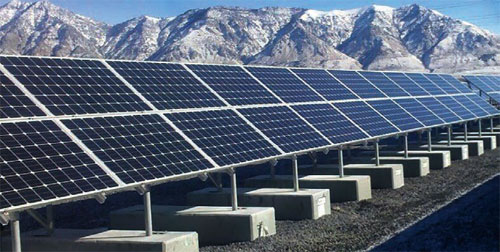By Brice Wallace
Utah’s energy industry supports 76,425 jobs in the state, but the industry is in the midst of substantial changes.
A report released last week by the University of Utah’s Kem C. Gardner Policy Institute and using 2017 figures shows that the energy industry contributed $9.4 billion in Utah GDP — $4.9 billion directly, $4.5 billion indirectly — and paid $4.3 billion in earnings into the Utah economy.{mprestriction ids="1,3"}
But the authors of the report said Utah is subject to rapid advancements in technology and global energy changes, among other factors, that are prompting a new landscape for Utah energy.
For example, coal production in 2017 was 40 percent lower than 2008 levels, and the share of fossil fuels in power generation shrank from 98 percent to 86 percent during that period. Meanwhile, electricity generation from renewable sources in Utah grew five-fold since 2008, making the state the fifth-largest producer of utility-scale solar power in the nation. Utah accounted for 4.1 percent of U.S. solar generation.
“I think ‘transition’ is a good word to describe the energy industry now,” Thomas Holst, senior energy analyst at the institute, said during the institute’s Newsmaker Breakfast last week.
For example, the Intermountain Power Project in Millard County wants to end its generation of coal-fueled electricity by 2025 and transition to serving as a regional energy hub integrating natural gas and renewable energy sources with emerging clean-energy technology. The goal also includes shutting down its natural gas-fueled generation by 2045 to transition to clean energy.
The Intermountain Power Project provides electricity to municipalities in Utah and California, among other customers.
Another example is that communities are working with Rocky Mountain Power to identify and ensure transmission capabilities of renewable resources, he said.
“Utah’s energy landscape is really changing,” said Michael Vanden Berg, energy and minerals program director for the Utah Geological Survey. That change began with oil prices crashing in late 2014 and early 2015, which resulted in fossil fuel production slipping while lots of solar capacity was coming online.
Meanwhile, coal, which was mined to the tune of 20 million to 25 million tons per year in Utah, now is at a “new normal” of 14 million to 15 million tons, he said. Offsetting that reduction is that producers are sending more coal to overseas markets. In 2019, of the 14.4 million tons mined in Utah, 3 million tons went overseas, he said.
Asked about Utah energy success stories, Vanden Berg said rooftop solar installations and energy-efficiency programs are resulting in people using less electricity per capita.
“In general, I like the diversity of it,” said John Downen, deputy director of economic and public policy research at the Gardner Institute. “We’re not just fossil fuels.” Beaver County alone has or will have five sources of renewable energy: solar, wind, hydro, geothermal and biogas, he said.
The Gardner report indicated that the energy industry supported 38,514 full- and part-time direct jobs in 2017. Energy industry purchases supported an additional 37,911 jobs, $2.3 billion in earnings and nearly $4.5 billion in state GDP. Outside of jobs focused on energy efficiency, the industry paid employees an average of $81,257 per year, or 60 percent higher than the state average for all industries. Direct energy-related royalties, severance taxes, conservation fees, property taxes and sales taxes totaled $492.1 million in 2017.
The report is available at https://gardner.utah.edu/wp-content/uploads/EnergyReport-Feb2020.pdf.{/mprestriction}








